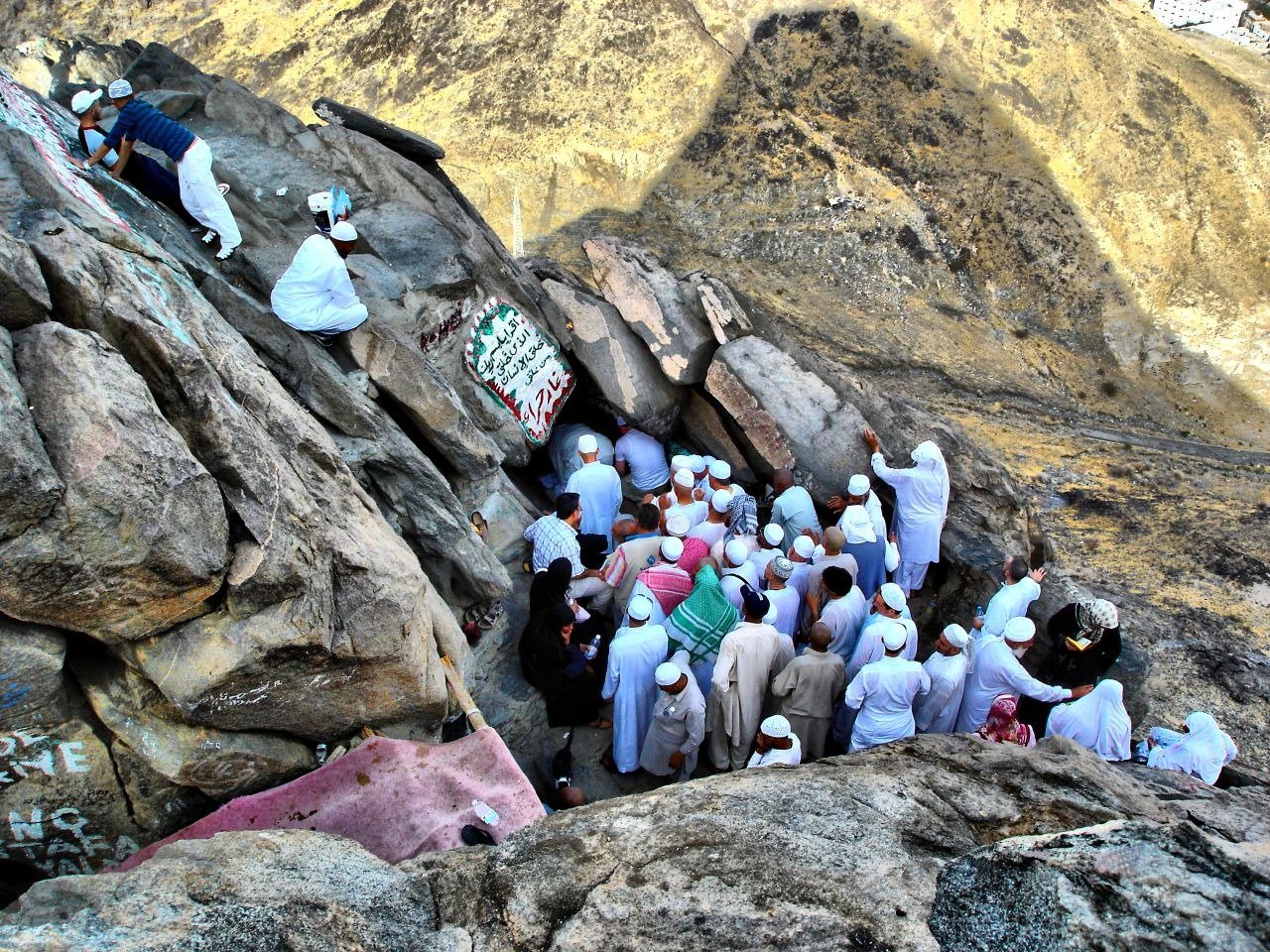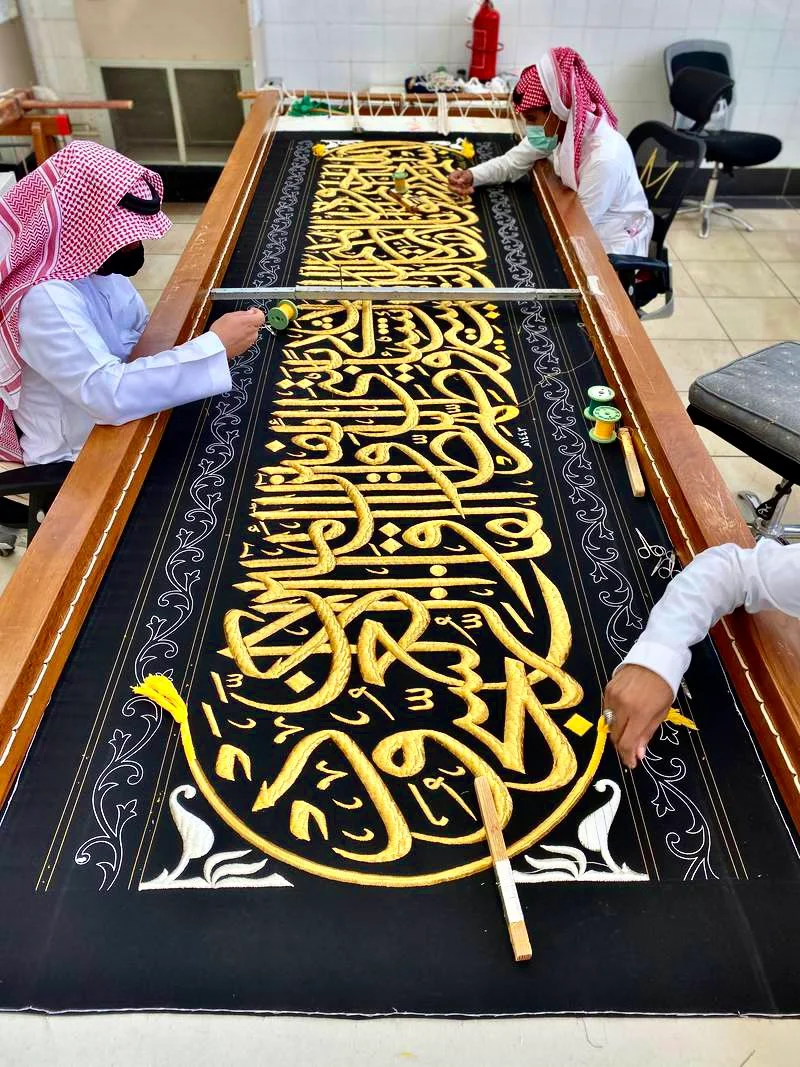
The Cave of Hira was of minor significance before Islam, its name comes from hira (jewels). Taking 1750 walking steps to reach, it is about 3.7 m (12 ft) in length and 1.60 m (5 ft 3 in) in width.[2] It is at a height of 270 m (890 ft).[9] During the Hajj (pilgrimage), an estimated five thousand visitors climb to it daily to see the place where Prophet Muhammad is believed to have received the first revelation of the Quran on the Laylat al-Qadr (night of power) by the angel Jibreel (Gabriel).[9] Most Muslims do not consider visiting the cave an integral part of the Hajj. Nonetheless many visit it for reasons of personal pleasure and spirituality, and though some consider it a place of worship, this view conflicts with Salafist interpretations of Islamic ritual.
While the cave plays an important role in As-Sīrah an-Nabawiyyah (prophetic biography), it is not considered as holy as other sites in Mecca, such as the Al-Haram Mosque, and so under most interpretations of Islam, the same reward is received for praying here as any other place in Mecca.[10] Before Prophet Muhammad’s first revelation, he had transcendental dreams, in which were signs that his prophethood had begun and that the stones in Mecca would greet him with the salaam. These dreams lasted for six months.[11] An increasing need for solitude led Prophet Muhammad to seek seclusion and meditation (Muraqabah) in the rocky hills which surrounded Mecca.[12] He retreated to the cave for one month each year, engaging in seclusion (Tahannuth).[b][3][15] He took provisions and fed the poor who came to him. Before returning home to his family for more provisions, he would circumambulate the Makkah.

The Ghilaf, which has lines from the Holy Quran embroidered on it, is made in the Dar-ul-Kiswa plant by hundreds of weavers at a cost of millions of Saudi Riyals. While the old Ghilaf e Kaaba would be disassembled and given to foreign dignitaries.